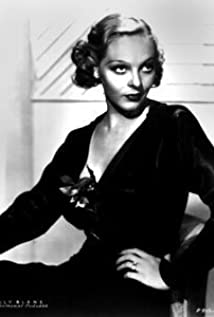Although this lovely, light brown-haired leading lady would wind up better known as one of Loretta Young's three acting sisters, Sally Blane nevertheless enjoyed a lively albeit modest "B" film career during the late '20s and '30s. The resemblance to her "A"-level sister was very strong--the same graceful, elongat...
Show more »
Although this lovely, light brown-haired leading lady would wind up better known as one of Loretta Young's three acting sisters, Sally Blane nevertheless enjoyed a lively albeit modest "B" film career during the late '20s and '30s. The resemblance to her "A"-level sister was very strong--the same graceful, elongated face and fawn-like, wide-set eyes. Unlike her sister, however, Sally lacked strong determination and ambition. Although she remained on the second or third Hollywood tier throughout her career, her film output was considerable if mostly routine.Sally was born Elizabeth Jane Young in Salida, CO, in 1910 while her mother was en route by train to the family home in Salt Lake City, UT (the train actually had to make an unscheduled stop so that her mother could give birth). Her parents separated when she was five and her mother moved the four girls and one boy to Hollywood where a sister lived. All the children pitched in financially by becoming movie extras. Sally and her brother John R. Young (better known as Jack) both appeared uncredited in the silent film Les sirènes de la mer (1917) starring Jack Mulhall, in which she played a sea nymph. She also had an unbilled part in Rudolph Valentino's smoldering classic Le cheik (1921).Sally's beauty only heightened as she grew up. Director Wesley Ruggles noticed the teen dancing at the Cafe Montmarte and tested her for his "Collegian" film series. She was cast and soon signed by Paramount, which insisted on the new marquee name of Sally Blane. Around the same time, younger (by three years) sister Loretta signed with First National Pictures. During their early build-up both Sally and Loretta were dubbed "Wampas Baby Stars of 1929". Throughout this time their mother maintained a firm hand in the girls' personal and professional lives.One of Sally's first leading roles was in the western Shootin' Irons (1927) and she went on to play a number of prairie flowers opposite Hollywood's top cowboys. She starred opposite Tom Mix in three pictures: Sur toute la ligne (1928), King Cowboy (1928) and Outlawed (1929). Her career peaked early, however, and Sally seemed content to freelance for such Poverty Row studios as Monogram, Excelsior, Chesterfield and Artclass in a variety of genres--crime thrillers, light comedies, mysteries, action adventures. She eventually developed a "nice girl" image. Other male co-stars she shared the screen with, both rising and established, included Rudy Vallee in The Vagabond Lover (1929), Douglas Fairbanks Jr. in Little Accident (1930), Lew Ayres in The Spirit of Notre Dame (1931), Walter Huston in The Star Witness (1931), Richard Cromwell in Shanghaied Love (1931), Edmund Lowe in both Trick for Trick (1933) and Au fond de l'océan (1934), Lee Tracy in Conseils aux coeurs brisés (1933), Buster Crabbe in She Had to Choose (1934), and Joel McCrea in Half a Sinner (1934).A two-year lull occurred following the filming of Fox's This Is the Life (1935), and Sally never tried very hard to regain her momentum. Much of this had to do with her meeting of (in 1935) and marriage to (in 1937) director and one-time actor Norman Foster, who had once dated her sister Loretta. Although Sally returned to films in 1937, she was already focused on her marriage and having a family. She and sisters Polly Ann Young and Georgiana Young, however, did make it a family affair at Loretta's insistence when they were given featured roles in Loretta's Et la parole fut... (1939). They all played, of course, Loretta's sisters and this was to be the only time all four girls ever appeared together. One of Sally's last pictures was in the whodunit Charlie Chan et l'Île au trésor (1939), directed by her husband. During WW II, the family, which now included a son and daughter, lived in Mexico where Foster was directing Spanish-language pictures. She appeared in one of them (La fuga (1944), with Ricardo Montalban). Later the family relocated to Beverly Hills and Sally officially ended her cinematic career with a small part in Un pruneau pour Joe (1955).Comfortably retired for many decades, Foster died of cancer in July of 1976. Sally herself succumbed to the disease two decades later on August 27, 1997. Cancer claimed sister Polly just months earlier and sister Loretta would die of ovarian cancer in 2000. Sally was survived by her two children, Robert and Gretchen. Sister Loretta's real name was Gretchen and Sally had named her daughter in honor of her.
Show less «



